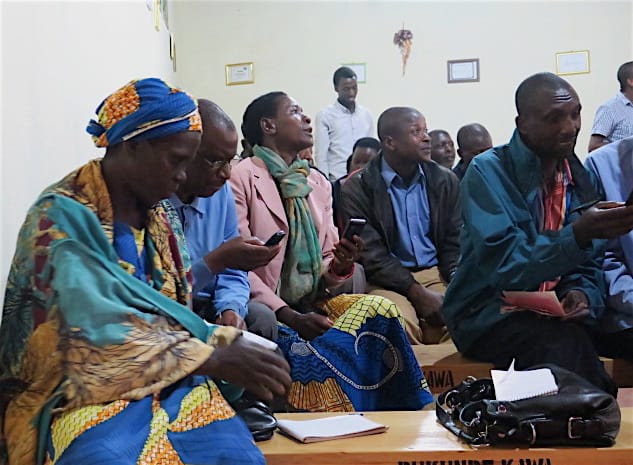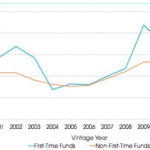Heeding the Voice of the Planet: Why CSR Isn’t Enough
The Trump Administration in the U.S. has appointed an administrator who wants to destroy the EPA, an Education secretary who does not believe in public education, an Energy secretary who thinks the main job is to lobby for the fossil fuel industry, and a chief strategist who advocates for closing the borders and turning the clock back on civil rights. Many now fear that these trends will inevitably accelerate the climate crisis and environmental meltdown, as well as lead to rising religious and ethnic intolerance, and a new authoritarianism.
Perhaps it is time to take a deep breath and consider the larger picture. Swiss psychiatrist Carl Jung provides some important perspective; indeed, he drew heavily upon the ancient Greek philosophers in formulating his groundbreaking theories in analytical psychology. Among his most important insights was the Karmic tendency of human emotions to metamorphose into their opposites: enantiodromia.
In his “Collected Works,” Jung described his use of the term as “… the emergence of the unconscious opposite in the course of time.” Jung observed that the emergence of unconscious ideas occurs when an extreme one-sided tendency dominates conscious life; eventually an equally strong countervailing tendency builds: euphoria becomes melancholy, valued becomes worthless and good becomes bad.
And so it may be that enantiodromia can help us better understand the current trajectory of the world: Brexit in Europe and the rise of Donald Trump in the U.S. have signaled an accelerating global trend toward economic nationalism, protectionism and xenophobia.
Failing states, mass migration and fear of terrorism are driving a worldwide shift toward isolationism replete with border walls and travel bans in the U.S. Automation and artificial intelligence are widening the gap between the haves and have nots, resulting in a swell of dislocated communities, people left behind and a shrinking middle class. A nostalgic desire to return to the high-paying factory jobs and mass consumption of old are fueling a roll-back in environmental protection, a resurgence of fossil fuel investment and a denial of global climate change.
But what if all these recent trends constituted a blessing in disguise? What if they represent the last gasp of a dying system? What if we are on the verge of a major shift in world view that will catapult us into a sustainable future? Remember that the principle of enantiodromia teaches us that extreme one-sidedness builds up a tension, and the more extreme the position, the more easily it can shift to its opposite.
What if the worldwide protests, grassroots activism and town hall engagement that have been spawned in the past few months are just the tip of the iceberg? What if this is just the start of a giant pendulum swing in the opposite direction? What if we are on the cusp of a new age characterized by tolerance, social inclusion, regeneration and environmental sustainability?
Remember: It’s always darkest just before the dawn. Let’s keep an eye out for the light.
One such ray of light may be the realization that certain projects – like the Keystone XL Pipeline – may no longer be financially viable. There are signs that the private sector will help take responsibility for advancing both the U.S. and the global sustainability agendas.
Even the Economist’s upcoming Sustainability Summit asks the private sector to take the lead: “Glaciers are melting, sea levels are rising and atmospheric greenhouse gases have reached an all-time high. Climate change is creating risks and challenges for nearly every industry, and following the public sector’s inadequate efforts to address them, the private sector must now take the lead in protecting the planet from further destruction.”
Who will take up the challenge? And what must be done?
How do we move business from the folly of competing for corporate sustainability ratings to actually making a difference?
In 1975, Steven Kerr published a now infamous paper in the field of organizational behavior entitled “On the Folly of Rewarding for A, While Hoping for B.” The article drew attention to the fact that reward systems in organizations are often well-intended but misguided in that “behaviors which are rewarded are those which the rewarder is trying to discourage, while the behavior he desires is not being rewarded at all.” Tragically, over 40 years later, the same unfortunate quality can be ascribed to the now burgeoning industry of corporate sustainability reporting and ratings.
Today, there are literally hundreds of corporate sustainability and ESG (environment, social and governance) rating and ranking indices. Some have achieved a high level of visibility and companies compete to be listed among the leaders on these lists, e.g. Dow Jones Sustainability Index, EIRIS Index, FTSE4Good ESG Ratings, and the Newsweek Green Rankings, to name just a few. Like their sister industry of corporate sustainability reporting, most ratings systems examine criteria at the corporate or company level – energy use, water use, waste generation and greenhouse gas emissions, along with risk management, corporate governance, human capital development, labor practices, diversity and expenditures on CSR projects and community relations. The objective is to have a set of criteria with which to evaluate and rate all companies against each other.
To be clear, these corporate sustainability ratings serve an important function and have gone a long way toward continuously improving the social and environmental performance of corporations throughout the world. But they have also inadvertently rewarded A, while hoping for B. How? In their quest to be consistent, comparable and easily measurable, the sustainability raters have defaulted to quantitative metrics that can be easily aggregated and reported for the entire company. Recognizing this, companies have staffed up to ensure that they can report healthy improvements in all the key dimensions that make up the rating indices.
But in so doing, we have inadvertently put most of our chips on continuous improvement in current businesses and largely forgotten about the critical importance of disruption, innovation and transformational change to corporate sustainability. Large incumbents in unsustainable industries can rack up big rating points by focusing on incremental reductions in negative impacts from current operations and making positive social contributions through improved labor practices and CSR projects. Lost in the shuffle are the harder-to-see and more nascent initiatives to commercialize new, sustainable technologies or develop more inclusive business models that may ultimately disrupt or even replace today’s core business. Yet, it is these more transformational initiatives that hold the key to moving us toward a more sustainable world: We are, in other words, rewarding for A, while hoping for B.
What can we do about it? In their book “Blue Ocean Strategy,” Chan Kim and Renee Mauborgne emphasized the strategic move (or initiative) as the key to innovation strategy, with the majority of corporate growth (and later, profits) coming from new strategic initiatives rather than from the continuing development and improvement of existing businesses.
Consistent with this view, I believe that refocusing our attention on new, transformational strategic moves (or initiatives) holds the key to evaluating corporate sustainability: Rather than chasing the fantasy of rating entire corporations as to their “sustainability,” let us instead shift the “unit of analysis” and spend more time understanding (and driving) the Green Leap – new strategic initiatives within corporations focused on leapfrog, clean technology and disruptive new business models that serve and lift the poor.
While we will no longer be able to rely so heavily on secondary data and a consistent set of parameters (as we have increasingly with existing sustainability ratings), identifying and evaluating transformational sustainability initiatives (both within existing companies, and as new ventures) is more consistent with our aim to recognize and reward what we aim to create – environmentally sustainable and inclusive business for the 21st century.
This is exactly the focus of our new Sustainable Entrepreneurship MBA (SEMBA) program at the University of Vermont. For a better idea of the types of high-leverage strategic initiatives that we aim to catalyze, read more about the Practicum Projects that form the backbone of the program. These include new, transformational initiatives with companies like Pepsico, Novelis, Facebook, CEMEX, Seventh Generation, Novozymes, Interface and Native Energy. Transformative change is also the aim of our Base of the Pyramid Global Network.
Let us end the folly of rewarding for A (incremental improvement to existing businesses) while hoping for B (transformational change to inherent sustainability and regeneration) by focusing our attention, once and for all, on the new business initiatives and strategic moves that actually have a chance of moving us toward a more sustainable world.
Image credit: Jan Buchholtz/Flickr
Stuart L. Hart is an American academic, writer and consultant and the founder of Enterprise for a Sustainable World, a nonprofit dedicated to helping businesses make the transition to sustainability.
- Categories
- Energy, Environment, Technology
- Tags
- renewable energy



